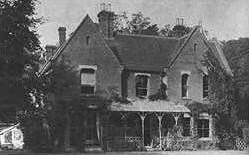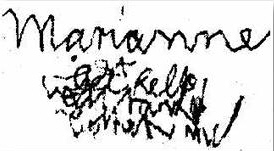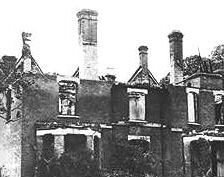|

The ghosts, poltergeists, and phantoms of Borley Rectory, the most haunted house in England

Borley Rectory carries the dubious mantle of Britains most haunted house. Put in perspective, there is nothing exceptional about the case - it has the usual spattering of apparitions, cold spots, poltergeist activity and a legend shrouded in mystery. What is exceptional is the immense amount of press coverage it has received, mainly due to the personal intervention of the most famous of English ghost hunters, Harry Price (founder of the National Laboratory of Physical Research of London).The site of Borley Rectory (around 60 miles north east of London in the Essex countryside) was first noted in the 1066 Doomsday Book where a Borley Manor was situated - it follows that a wooden church would probably have been built on the site. Its history is shrouded in myth, but the first indication that all was not well on the site of Borley was in 1362 when a Benedictine monk attempted to elope by horse drawn coach, with a nun from the nearby nunnery. Their plans were thwarted - the monk was hanged and the nun was bricked up alive in the walls of the nunnery.
The red brick building that was Borley Rectory was built on this site by the Reverend Henry Dawson Ellis Bull (rector of Borley) in 1863, who later settled there with his wife, Caroline Foyster (where she mothered fourteen children).
Thereafter, witnesses reported seeing stones being thrown from an unseen hand, ghostly footsteps were heard and the spectre of the nun, the most reported apparition at Borley, began to be seen, often in broad daylight and on a stretch of ground to be named the nuns walk. On July 28th, 1900, three daughters of Henry Bull all saw the nun, and assuming she were normal flesh and blood, went to greet her as a guest on the grounds - she mysteriously disappeared. The nun was also seen standing by a gate post on four separate occasions by a passing carpenter.
It was in 1928 when the haunting of Borley Rectory got underway in earnest (note, this is also the time when Harry Price became involved - Price was later to be accused of fraud). The Bull family had died one by one, or moved away and after a short period standing empty, the Reverend Guy Smith and wife moved in. Very quickly, there were reports of whispers in the night, unseen footsteps, objects being hurled at guests, illumination from unlit rooms, two maids saw the nun yet again, even a phantom coach was seen. The words Dont Carlos, dont were wailed late at night - Carlos was the nickname for Henry Bull.

In 1929 and at their wits end, the Smiths contacted the Daily Mirror requesting help. Harry Price then invited himself to the Rectory to carry out a full investigation. On their first visit the group (comprising of Price, his secretary and reporter) all witnessed poltergeist activity, spontaneous displacement of objects, strange odours, cold spots, the sound of galloping horses. Most notably, the Daily Mirror reporter, Mr C V Wall, saw the nun. Within a year, the Smith family left Borley Rectory forever, dismissing their move as forced due to a lack of amenities.
In October of the same year, the Reverend Lionel Algernon Foyster, wife Marianne and daughter Adelaide move in. Within a year, the activity had increased to such a degree that after a visit from Harry Price, he voiced his fears. Apparently, the phenomenon had become more violent and Marianne appeared to be the preferred target. The by now usual paranormal activity was complimented by attacks. Marianne was assaulted at least twice, once being struck in the face, another time being flung from her bed after an exorcism. Perhaps the most interesting paranormal evidence comes in the form of notes and wall writings addressed to Marianne. In this period, Price claimed that at least 2000 separate paranormal events had taken place.

Not surprisingly, in 1935, the Foysters left Borley rectory and two years later, Harry Price leased the house for a year. He conducted a plethora of experiments and vigils, but the activity appeared to have died back considerably. Indeed, Price was accused of fraud on more than one occasion (Price was allegedly caught with a pocketful of pebbles after a short pebble throwing poltergeist had allegedly been tossing stones at witnesses). After a seance on March 27th, a message was received that Sunex Amures and one of his men would burn down the rectory that very night. Nothing happened but on February 27th, 1939, a fire broke out at midnight and razed the building to the ground.
To this day, the site that Borley Rectory occupied holds a certain mystique for parapsychologists. It is unlikely that all the reported events at Borley were fraudulent, but there is enough evidence and testimony to bring ALL of Harry Prices conclusions in to disrepute. All the families leaving the rectory claimed that their decision was in no way related to any paranormal activity, no matter how it was reported in the press. Unfortunately, as Borley Rectory no longer stands, no-one will ever know the full truth, only the legend remains - which is perhaps, rather fitting for Britain most haunted house.
Copyright 1996 Living Spirit Pictures Ltd
Need more information?. Contact the Strange World Editor.
|